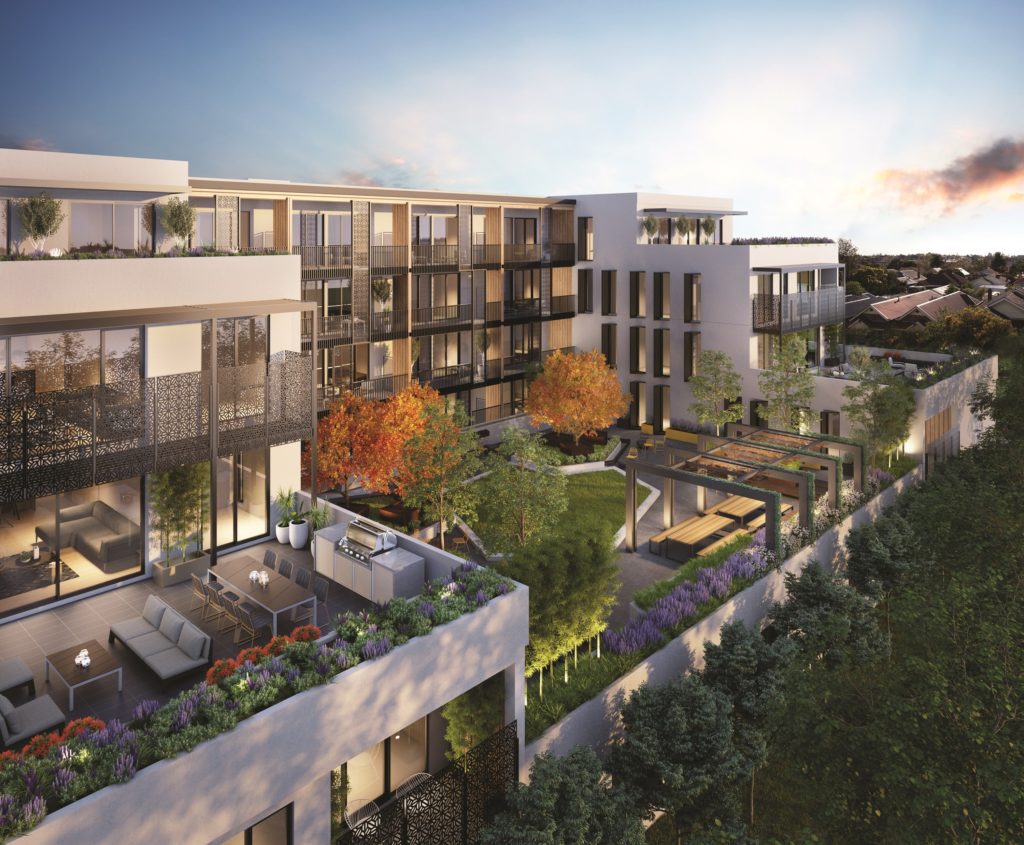What Makes Architectural Visualisation Look Realistic? Realistic Architectural Visualisation

3D visualisation has allowed architects to create the impossible.
The ability to create lifelike CGI designs of buildings has had an immense impact on architecture and interior design as a whole. Through 3D rendering technologies, designers can create beautiful photo-realistic imagery of future projects.
Having realistic architectural visualisation can be an excellent way for developers to showcase their plans and design intent within a convincing environment.
However, exactly how it is possible to create such detailed and realistic renderings of otherwise fictional, non-existent buildings is down to a CGI expert’s creative eye and technical ability.
Below, we will cover the impact of 3D rendering within architecture and highlight the defining principles and characteristics of good architectural rendering.
The importance of realistic architectural rendering
Having attractive visual images of a completed project can be a massive aid in property marketing and can illustrate your plans to a broad audience in an engaging fashion.
Capturing the building’s structure and its place within the landscape or environment is where top-quality 3D visualisation architects flourish, as they can create imagery that conveys the mood or atmosphere of a completed project.
CGI and 3D visualisation are invaluable tools in the design process and – if used correctly – are only limited by the architect’s imagination.
How CGI artists make architectural visualisation look realistic:
Understanding the property they are rendering
The best CGI professionals and 3D visualisation experts always work from technical and construction drawings.
These include a site plan, floor plan, cross-section views and elevations.
By fully understanding the building’s structure and environment, the CGI specialists can create an accurate visualisation that takes on various practical design considerations.
For a CGI artist to make an accurate rendering of a building, they must have all the appropriate information about the space they are designing. The more a 3D specialist knows about the development, the more accurate their render will be.
If these proportions are even slightly off, it can lead to the rendering appearing distorted.
Another crucial part of the 3D design method is setting the horizontal and vertical axis. These axis act as the foundations of the entire design, and if they are set wrong – particularly the horizontal axis – it can lead to the whole building looking lopsided or crooked.
Use architectural rendering software
Professional architectural renders require both a keen artistic eye and the right software.
Given software development’s ever-evolving nature, architectural 3D visualisation experts always have to learn new programming techniques to stay up-to-date.
A large part of what makes any CGI rendering look realistic is the proper use of textures. These textures help make images appear more realistic, giving buildings depth and feeling through the creative use of shadows and highlights.
Without textures, rendered images would look two-dimensional and flat.
From a property marketing perspective, architectural rendering software can be a massive help.
Accurately designed and realistic renders can help speed up the development’s planning application process, attract funding, and show-off projects in an attractive, captivating way.
However, architectural rendering software is only as good as the architect using it.
Having a solid understanding of the software’s technical aspects will get you so far, but creating beautiful and believable 3D visualisations requires technological knowledge and an eye for design.
Practice makes perfect
Mastering architectural rendering software is not an overnight task. As 3D rendering software is continually being updated and refined – 3D creatives never stop learning.
With this continued learning comes the likelihood of continued mistakes, and making these mistakes is a fundamental part of the process of any 3D expert.
Designers should view them as a catalyst to grow and develop their skills – rather than a limitation.
As with all things, discipline is one of the best ways to further your understanding and ability as a 3D designer and something you should never stop doing.
Have a variety of references
Another crucial part of any excellent 3D design is to work from a variety of reference sources.
When working on an architectural project, an excellent 3D artist will draw inspiration from both the architect’s drawings and plans and the world around them.
Even the smallest of details can be a great inspiration to a 3D artist.
From a single drop of water on a blade of grass to the way light reflects from the windows of a skyscraper – everything is an inspiration.
By picking up on minute details and retaining the information, digital artists can then replicate them within their designs.
These details can help 3D artists create a more realistic looking rendered image, as it is often subtle features that can help bring a design to life.
Model with realism
When people consider architecture rendered images, they often assume they need to be ‘perfect’ to be convincing.
However, real-life is never perfect – and the best 3D models and renders reflect this in their designs.
By deliberately adding small details within the design – such as rumpled cushions or uneven furniture – the 3D designer can give the interior design a more ‘lived-in’ and authentic ‘realness’.
Another way that realism can be useful within 3D interior design is through light hierarchies.
To achieve a convincing 3D effect, the designer must first place a primary, secondary, then fill lighting. Studying how various surfaces reflect, refract and react in different light settings can add lifelike quality to a 3D model or rendering.
As you can imagine, mastering the physical quality of texture such as glass, wood, concrete, or metal takes considerable focus and skill.
However, once mastered, realism can be a crucial aspect of any architecture rendering project’s success and help turn ideas into fully envisioned models.
Final thoughts
Having high-quality architectural visualisations of plans can be a great way of generating new business and consumer engagement around a project.
In the past, the only way to visualise a completed project was through the architect’s drawings and elevations – which could only provide a single technical point of view of a project.
Thanks to the popularity of 3D rendering, it’s possible to create an image that captures far more.
By placing furniture and characters within a realistic, rendered image, architects can accurately depict how someone would experience a space – rather than visualise it.
This has substantially impacted property marketing and other business sectors – even allowing estate agents to give virtual ‘tours’ of digitally rendered buildings.
3D architectural visualisation has changed how it is possible to experience a building’s interior or designs and has a vital role in architectural design.

